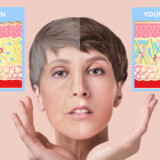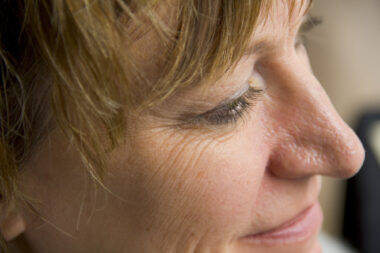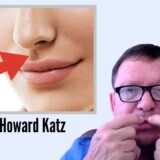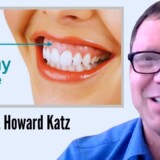Will At-Home Conotoxin Products Replace Botox Injections


Conotoxins – or cone snail venom products, as they are also called – are starting to get attention as a potential at-home replacements for Botox. But can these creams and serums really have the same impact as professionally injected Botox shots? We’re skeptical. Still, conotoxins are a development in the aethestics industry that bears watching.
American consumers are willing to go to extremes to fight wrinkles and have younger, more toned skin. But what about snail venom? If a product exists that can mimic the positive impact of Botox but can be used at home with no medical or aesthetics office visit necessary, it could be a game-changer. So far, however, conotoxin products haven’t taken the world by storm – and consumers aren’t exactly clamoring to get them.
What Are Conotoxins?
Some are calling conotoxins the secret Botox alternative because many people haven’t heard about them yet. Also referred to as MU-conotoxin, conopeptide or snail venom, conotoxins are synthetic compounds that mimic the effects of the venom from a specific type of snail to relax facial muscles. The result is an instant but temporary smoothing of lines and wrinkles.
Snails are not harvested to make products that contain conotoxins, so no creatures are harmed and there’s no negative environmental impact to the southwestern shores of Australia, where cone snails are native and use their venom to paralyze enemies so they can consume them.
How Do Conotoxins Work?
Conotoxins relax away expression lines and wrinkles. A neuropeptide found in natural cone snail venom as well as the lab-created synthetic product blocks NAV1 receptors on nerve endings and therefore inhibits muscle contraction. The structures under the skin relax, making the face look less wrinkled and more youthful. Just 2 hours after topical application, wrinkles are visibly reduced, according to promoters of the limited clinical research that’s been done.
What Are The Benefits Of Cone Snail Venom?
Those who purchase over-the-counter synthetic cone snail venom products may get quick reduction in the look of deep wrinkles, crow’s feet and other lines. A 2-week study conducted by AMA Laboratories found that women who used one such product got a 64 percent reduction in visible wrinkles. Some got a reduction of 90 percent or more. That’s better than many other topical creams, and it’s better than results from 6 months of treating facial skin with retinol, according to some experts.
But it isn’t better than Botox, which can provide a dramatic reduction in wrinkles that lasts for weeks or months from just one in-office treatment. Botox is also specifically targeted by experienced injectors to the sites that can do the most good rather than used at home by someone who may not be trained in how to get the most from the product. When combined with dermal fillers to reduce the creases left by deep, longstanding wrinkles, Botox results can be even more remarkable.
Not much is known about the long-term benefits of conotoxins or potential cumulative side effects. There are no proven long-term benefits, however it may work to train muscles over time to relax. This benefit is also possible with repeated use of Botox.
So what should a patient with facial wrinkles and lines do? The best bet is the aesthetic treatment proven through years of research and used by millions of patients. To reduce the signs of aging, turn to Botox.
Dentox teaches medical and aesthetic professionals how to administer Botox injections safely and without side effects or waste. To learn more about Dentox courses with Dr. Howard Katz, reach out for details. You can also sign up now for an in person seminar at one of several locations around America – or choose a live online or on demand course.
Botox And Other Injectables Booming, Thanks To Zoom And Selfies


For Botox injectors, the rise of selfie culture and the increase in video calls and online conferencing are great for business. While Botox was once considered a last-ditch effort to save middle-aged faces from the ravages of time, today men and women of all ages are turning to injectable cosmetic treatments. Teen girls want to look like the hottest social media influencers while boys and men are increasingly wanting to stop aging before it starts while enhancing their lips and jawlines.
An astounding 14 million nonsurgical cosmetic procedures were conducted around the world in 2020, an increase of more than a million from 2018 statistics. Even a global pandemic didn’t appear to hold numbers down.
Worldwide sales of noninvasive cosmetic treatments stand at around $60 billion, and that could triple or more by 2030, according to analytics firm Research and Markets. Much of that growth will be from injectables like Botox and dermal fillers.
The reason for the astounding growth? High-resolution Zoom meetings and other video calls plus the prevalence of selfies among some groups in society get much of the credit. Some apps have filters that help users see what they might look like with some enhancements to their face. The contrast between what they see on a video call and what they see through a filter can be dramatic and unsettling for some people.
Stats Prove Recurring Revenue For Injectors
In 2020, there were about 2.4 million injectable procedures performed even with some medical and aesthetics offices closed due to the pandemic. In Germany, there were about 700,000 such treatments in 2020. Demand reached half a million procedures that year in Brazil, even though people generally have less disposable income there.
In Asia, demand is particularly strong for what’s called “prejuvenation” – the desire to stop lines and other signs of aging before they start by having cosmetic procedures in the teen years and early 20s.
These statistics mean recurring revenue for the medical and dental offices, spas and aesthetic treatment centers around the globe that offer injectables. Because Botox and dermal filler treatments must be done every few months, satisfied clients will return again and again, and a younger start means more business for injectors.
Investors have put more than $3 billion into more than 400 aesthetic clinics in the last 5 years, according to consulting firm McKinsey. American pharmaceutical company AbbVie paid $63 billion in 2020 for Allergan, the company that makes Botox and filler Juvederm and controls almost half the injectables market.
New products from companies in South Korea, France and elsewhere threaten Allergan’s dominance but only serve to expand the demand for and availability of injectables.
Some fillers now contain hyaluronic acid, an ingredient familiar to many people who use skincare products and therefore less off-putting than Botox and other fillers. Fillers are even being made from a patient’s own blood or stem cells, also more appealing to some consumers.
One caveat, however: The increasing desire for injectables among younger people has caught the attention of regulators in some jurisdictions. In England, for example, the government has banned treatments for those under age 18 and now requires that all injectors to get a license. In the United States, each state makes its own rules for Botox and fillers, which vary widely.
If you’re an aesthetic or medical professional ready to get your share of the injectables market, Dentox can help by providing Botox and dermal filler training on your terms – in person, live online or on demand. All Dentox training is hands-on even when conducted remotely and is taught by America’s most experienced injectables instructor, Dr. Howard Katz. Learn more or sign up for Dentox training now.
Botox and other injectable cosmetics are booming

Video-conferencing and the selfie culture are behind the craze

Cosmetic procedures used to be the preserve of middle-aged women and often involved surgery. Today they are increasingly sought by girls who want the photoshopped faces of their favourite social-media influencer, and by a growing number of men wishing for fewer wrinkles, fuller lips and sharper jawlines. Globally, more than 14m nonsurgical procedures were conducted in 2020, even amid the pandemic, up from fewer than 13m two years earlier. Increasingly, scalpels are giving way to syringes.
Research and Markets, a firm of analysts, reckons that the global sales of non-invasive aesthetic treatments, currently around $60bn, could more than triple by 2030. A large part of that growth will come from injectables. These include Botox and other substances that freeze facial muscles, as well as dermal fillers which plump softer tissue. Demand has been fuelled by the proliferation of selfies and, during the pandemic, high-resolution video-calls. Snapchat and Instagram filters give users a glimpse of what they could look like with a filler-generated “liquid facelift”. The contrast with what they see on unadorned Zoom can be stark.
In America 2.4m injectable procedures were carried out in covid-hit 2020, roughly one for every 100 American adults. About 700,000 such treatments were performed on Germans, not renowned for an obsession with looks. Brazilians, who are famously beauty-obsessed but much poorer, subjected themselves to around 500,000. Demand for “prejuvenation” work is especially strong in Asia, where younger patients (for, despite the convenience these are still medical procedures) want to pre-empt a craggy visage before any lines actually appear. Since injectables have to be topped up every few months, they guarantee producers of the substances and clinics that administer them a source of recurring revenue. The younger the customer starts, the better for business.
According to a report by McKinsey, a consultancy, over 400 aesthetics clinics, which administer injectable treatments (among others including things like laser fat removal) raised more than $3bn from investors over the past five years. In 2020 AbbVie, an American pharmaceutical firm paid an eye-popping $63bn for Allergan, which has controlled nearly half the market for injectables since it launched Botox for aesthetic use two decades ago and Juvederm, a dermal filler, a few years later.
New products are beginning to threaten Allergan’s dominance. Hugel, a South Korean company, now has a rival offering that is half the price of Botox. It is eyeing the Chinese market, where the stuff is still less common than dermal fillers. Ipsen, a French drugmaker, and Merz Pharma, a German one, also make Botox-style injectables. Ipsen’s Dysport has done well in Turkey and Russia. Merz’s sales are growing briskly in the emerging economies of Asia and Latin America.
Some modern dermal fillers, meanwhile, are formulated with ingredients such as hyaluronic acid that are typically found in mild skincare products. That is less offputting to potential customers than Botox, which is derived from a toxin that occurs naturally in spoilt sausages. Other new treatments are dispensing with foreign substances entirely—though this doesn’t always seem all that more appealing. Certain cosmetic clinics offer to inject stem cells from a patient’s own fat into their face, or platelets from their blood to rejuvenate the skin.
There is a wrinkle. The injectables craze, especially among youngsters, worries regulators. Botox is a prescription drug in most places but many dermal fillers are not. “Treatments are often trivialised on social media and people don’t understand the full ramifications of what can go wrong,” says Tijion Esho, a cosmetic surgeon in Britain. Misplaced injections can lead to abscesses or, in some cases, necrosis. An outcry from doctors and victims of botched procedures forced the British government to announce in February that it would require a licence for people administering nonsurgical treatments. England has already banned them for under-18s.
Botox Dynamic Wrinkle Training

 Patients who are unhappy with their look due to developing dynamic wrinkles are likely to ask you whether there is anything you can do to improve their appearance.
Patients who are unhappy with their look due to developing dynamic wrinkles are likely to ask you whether there is anything you can do to improve their appearance.
Dynamic wrinkles may be treated with Botox, which is the most convenient and least expensive alternative. When your patients use Botox, they can keep their wrinkles at bay for three months. Is it, however, the only option? Here’s all you need to know about the situation.
What Makes Dynamic Wrinkles Different
Dynamic wrinkles and static wrinkles are the two basic forms of wrinkles on the face. Static wrinkles occur when volume and collagen in the skin are lost, whereas muscle contractions induce dynamic wrinkles. As a result of this crucial distinction, treating dynamic wrinkles differs significantly from treating static wrinkles. Among the more common types of static wrinkles are the following:
- Sagging cheeks and jowls
- Drooping eyelids
- The wrinkles around your mouth
You might surgically tighten your patients’ skin to restore their youthful contours. Noninvasive injectable dermal fillers can increase volume and fill in lines in static wrinkles. On the other hand, dynamic wrinkles cannot be reduced by just treating the skin. Therapy must focus on the underlying problem of the facial muscles, which are implicated. The following are examples of dynamic wrinkles:
- Small lines on the outer portion of an eye known as Crow’s Feet
- Lines between the eyebrows known as frown lines
- Lines on the forehead known as forehead wrinkles
Using Botox to Reduce the Appearance of Dynamic Wrinkles
There’s a solid reason why injectables are so popular in the United States. The procedure does not require any anesthetic or cutting, and the results are superb. They’re a terrific choice for those who have a lot on their plate. However, the main drawback is that they only last three to twelve months on average before being redone.
Botox’s ability to cure dynamic wrinkles has made it a household brand. It works by disrupting nerve impulses and preventing face muscles from contracting using a secure version of botulinum toxin. The therapy temporarily eliminates dynamic wrinkles and gives the skin a more youthful look by relaxing these muscles and restricting their activity.
For treating dynamic wrinkles, Botox is the best thing to do. Many patients choose to come in several times a year to look their best because they are so happy with the results. The effects of the injections don’t show up until about a week after they’re done. The next treatment can be done before the last dose has completely worn off.
Are There Any Other Options?
Botox is widely accepted as a safe and effective treatment option. Still, it is not for everyone, especially those who do not relish the idea of receiving injections every few months. Botox scares some folks because they’re worried about looking phony or because the procedure is expensive. There are some patients who will not benefit from this treatment, and that is also true. As long as a trained practitioner does it, Botox seems to be completely natural.
Unfortunately, there aren’t many options for treating dynamic wrinkles that are both safe and effective. Although Botox is derived from the botulinum toxin family, it is one of the only cosmetic therapies that affect muscular action rather than the skin. Many patients mix Botox with additional procedures, such as dermal fillers, to achieve their cosmetic goals.
A Youthful Radiance—Botox or No Botox?
Even if your patients are not fans of Botox, learning more about face rejuvenation choices is a smart idea. Although skin aging does not generate dynamic wrinkles, dry, dull, aging skin can indeed exacerbate the appearance of these wrinkles. A resurfacing surgery or collagen remodeling may be worth considering to help renew the skin and give it a more youthful appearance.
Facial rejuvenation surgery can also be beneficial to some patients. Even while facial skin tightening alone won’t get rid of dynamic wrinkles, the face’s overall appearance will be more youthful as a result. Patients can mix and match treatments to achieve the look they desire.
Consult a Professional
There are many misconceptions regarding Botox, but the fact is that the therapy has a long history of safety and a large, devoted followers. It may or may not be the best option for your patients, but learning more about potential treatments from an aesthetic medicine professional before making a decision is a smart idea. If your patients are concerned about dynamic wrinkles, encourage them to seek advice from a professional before dismissing Botox.
Enhance your patients’ lives by learning new techniques to make them look and feel better. If you’ve obtained the proper training, your patients will profit from your skills and expertise. To learn more about online courses and in-person patient training events, please visit https://dentox.com/live-courses/ and https://dentox.com/botox-training/.
Save money by Avoiding the Need to Redo the Patient’s Forehead (Botox)

Injecting on the forehead is a common request from your patients, but if you don’t know exactly where the muscle is strongest, you’ll end up injecting in the wrong place.
In other words, the best place to inject someone’s face is where the strongest muscle is. You achieve this by searching for the deepest lines in the painting. The patient isn’t learning anything if they’re told to frown so that you can see their lines.
In this case, you can ask your patients to try looking at your finger on the brow with the frontalis muscle you just placed on their brow. Determine where the deepest lines are.
The deepest line will appear in the center of the forehead in some persons and the upper forehead in others. Those are the places where you’ll be injecting yourself. There are a lot of free touch-ups to be done if the lines are high up on the forehead if they are injected across the center. This is going to end up costing you a lot of money.
How to Get Rid of Scars With Botox

A vertical incision on the forehead is a good example of a trauma wound that can be stitched, as it is parallel to the muscle fiber. Because the muscle will drag the scar in the direction of the incision, this is very easy to conceal.
It is important to note that if the incision is made at an angle of 90 degrees with respect to the muscle fibers, the muscle’s pull will open up the damaged area, resulting in a larger scar.
You can prevent this from happening by ensuring that when you inject any incision on a patient’s face where the incision is at a 90-degree angle to a muscle fiber, the muscle beneath the traumatized area relaxes, so that at least for a few months after you’ve sutured up the face, that muscle isn’t pulling against open wounds, and this will help reduce the size of the scar.
Botox Treatment for a Surprised Appearance

When you inject just the glabellar muscle when you do just the 11s, your patients may seem astonished, guilty, or frightened after the injections have been administered. That’s because the antagonist muscle, the muscle that opposes the muscles of the elevens, is the corrugator or frontalis muscle.
In the event that someone has a particularly strong frontalis muscle, which is responsible for lifting the patient’s eyebrows, and you relax the muscle responsible for lowering the patient’s brow, the patient will look like they’ve been scared.
Remember that when you perform the elevens on a person’s face, you may additionally need to perform two injection sites on the forehead to offset the relaxation of the corrugator muscles.
Under-the-Nose Botox Injection (Dr. Howard Katz)

When injecting under the nose to correct a gummy smile, make someone appear more cheerful or happy than they normally are, or give someone a lip flip, it is vital to confirm that the patient has normal lip function.
You accomplish this by having your patient pucker his lips. The Cupid’s bow, the V in the center of the top lip, should remain in the same place on the face.
If the Cupid’s bow shifts to one side when the patient puckers, it indicates that one side of the lip is malfunctioning.
These treatments can cause your patient to lose their ability to control their lip muscles and, thus, will cause their drool to come out of their mouths.
So, before you begin any lower face treatments, ask the patient to pucker and make sure the V of the Cupid’s bow is in the middle of the face.
What to Do If You Have a Gummy Smile

When treating a gummy smile, the goal is to relax a hypertonic lip. Because of the muscles that run along and under the nose, when someone smiles, they show more gum than teeth.
You can never be sure how far the patient’s lip will fall when you relax it, so they must expose at least as much gum as the tooth. To be safe, the gum must be 10 to 11 meters long because if you relax your lips, you never know how far they will drop. For example, a person may have a front tooth that measures 10 or 11 millimeters in length.
A 10-millimeter tooth, for example, will cause the lip to drape below its incisal margins if the person has a four- or five-mm gummy smile with four or five millimeters of gum visible.
This means that the quantity of gum displayed on the tooth should be proportional to its length. It would be best if you did not touch that case unless you have a valid reason.
Please check out the video below:
Chin Treatment with Botox (Dr. Howard Katz)

Many patients believe that using filler material is the only option to fix their chins. This is untrue. Injectables can be used to fill in the area around the chin for those who have a chin deficiency.
Other factors, though, can make the chin appear more powerful than it is. Those who suffer from recessive chin develop a very deep labiodental crease in most cases. Because the chin bone is too small, a hypertonic mentalis muscle pulls the skin taut, resulting in a deep labiodental crease in the patient.
As a result of relaxing the mentalis muscle, the chin muscle pushes the mentalis muscle upwards, while the depressor anglers muscle pulls the corner of the mouth downwards. So, if we merely inject the mentalis muscle, we will relax the muscle that generates that deep furrow and makes the chin appear smaller, and we will be able to create the impression that the chin is not quite so prominent.





